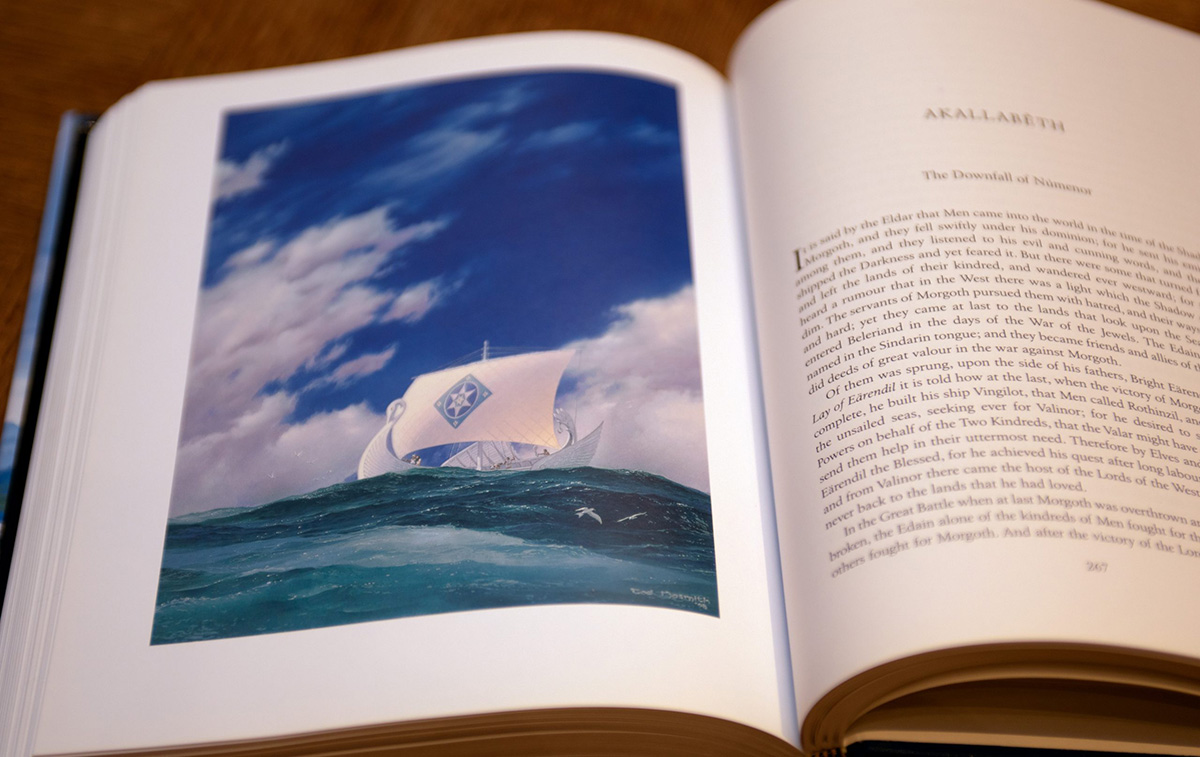The beloved novels of J. R. R. Tolkien have found homes in the hearts of readers since their publication in the mid-20th century, rising to global renown after the hugely successful film adaptations of The Lord of the Rings and The Hobbit by Peter Jackson.
Most fans are aware that the narratives and settings which appear in these stories are only the tip of the iceberg when it comes to the magnificent universe that Tolkien spent most of his life creating.
However, faced with a disorienting array of appendices, a twelve-volume history of Middle Earth, and an account of the mythos of Tolkien’s universe that is so infamously dense it has been likened to the Bible, it’s understandable that one might not know where to begin when making a better acquaintance with the oeuvre. Of all the supplementary works, The Silmarillion is the most essential to Tolkien’s canon.

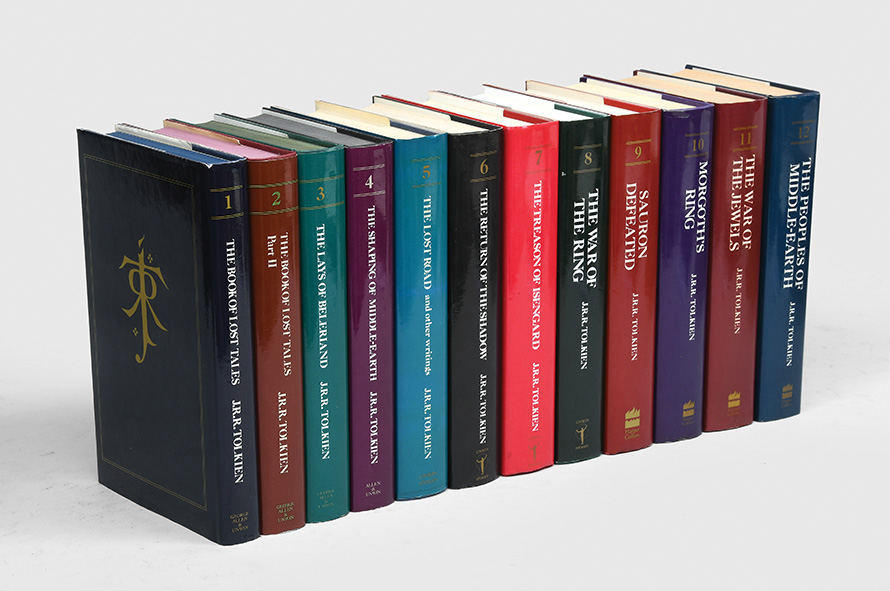
A first edition of The Silmarillion published in 1977.
The 12 volume History of Middle-Earth, edited by Christopher Tolkien. These volumes are drastically expanded from The Silmarillion and include tales, songs, poems, maps, illustrations, genealogical tables, and even linguistic primers for Tolkien’s languages.
Exciting Insights into “The Rings of Power”
With the release of Amazon’s much-anticipated (and, by some, dreaded) series The Rings of Power due in September 2022, fans are about to be introduced to a host of new heroes, foes, wars, and locales drawn from Tolkien’s extended works (alongside, we understand, some controversially created entirely for the show).
An account of the history of Middle-earth is laid out in The Silmarillion, a work which has a reputation for being convoluted and not exactly what you’d call ‘readable’. While The Rings of Power will not be a straightforward adaptation of this, or any, of Tolkien’s books, a grasp of some of the events unfolded within its pages will definitely provide a bit of a head start. With this in mind, allow us to provide a (very) potted history of the world of Arda.
What is The Silmarillion?
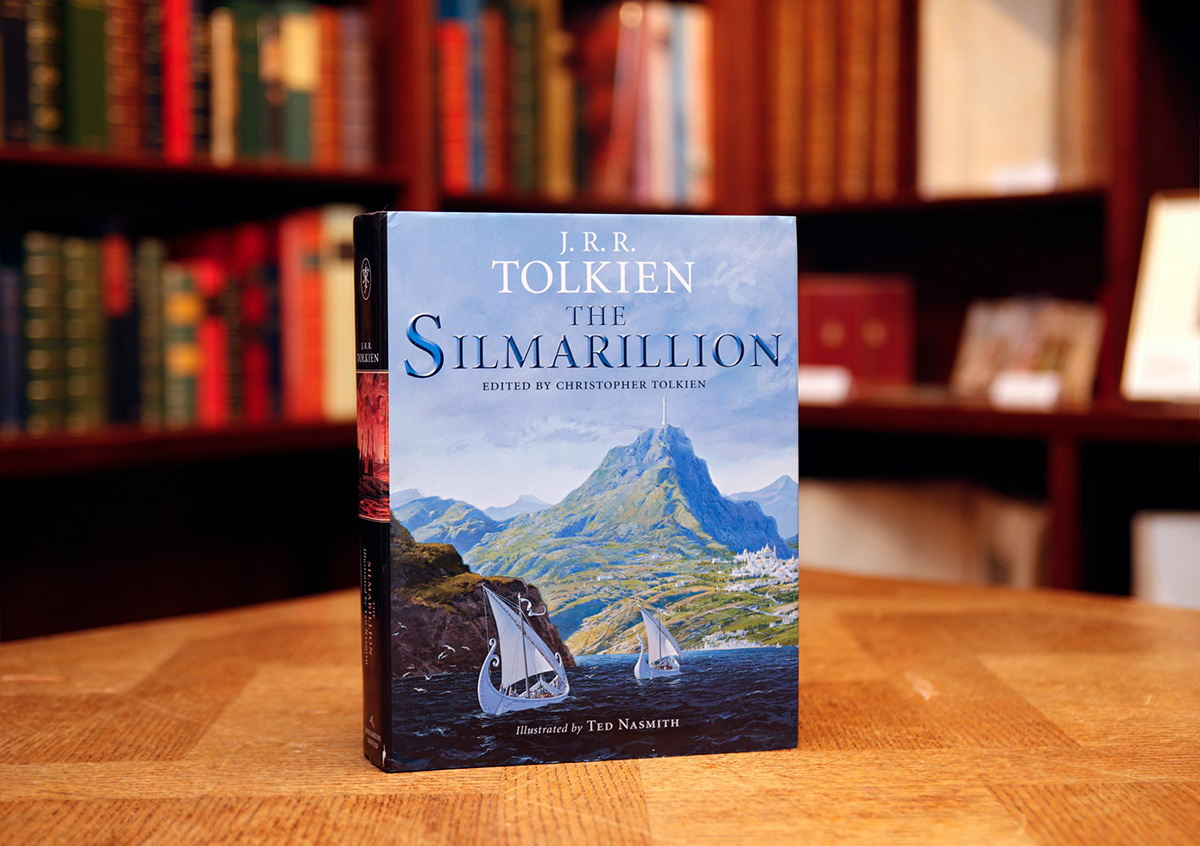
The revised and expanded edition of The Silmarillion (2004), illustrated by Ted Nasmith.
The Silmarillion is essentially Tolkien’s legendarium for the world of Arda (the world of which Middle-earth is a part). It draws from various sources of inspiration including Greek mythology, the Finnish epic the Kalevala, the Bible, and aspects of Celtic mythology. It includes Tolkien’s creation myth and various histories from then until the end of the Third great Age of the world. The Ages are of varying lengths, and are usually bookended by cataclysmic or world-changing events, such as wars or disasters.
The Silmarillion covers the Second Age (which we understand is when the Rings of Power will be set) and the Third Age, when the events of The Hobbit and The Lord of the Rings take place. Published posthumously, it represents several of Tolkien’s works collected and edited by his son Christopher.
While the book is made up of five separate works, it was Tolkien’s wish to one day see them published together. “He’d produced this huge output”, says his grandson Simon, “that was his great work but it had never seen the light of day despite his best efforts to get it published”. Such a project was, however, deemed ‘unpublishable’, and Tolkien died before being able to complete coherent rewrites of each of the stories. For this reason, Christopher’s job of stitching together an organised history from his father’s notes required mammoth amounts of work and, in some cases, invention, where gaps needed to be filled.
On its publication, The Silmarillion was poorly received, some critics complaining of the absence of a single quest to follow or core cast of characters to invest in, while others found that the names of the various beings and places – sometimes only slightly differentiated from one another – were simply too hard to keep track of. Indeed, any attempt to summarise the book does at times descend into a disorienting cacophony of unfamiliar words and concepts.
So take a deep breath, and we’ll try to make this as straightforward as possible.
What Happens in the Silmarillion?
The first book of the Silmarillion is titled Ainulindalë: The Music of the Ainur. A fairly short work, it tells of the creation of Eä, the “world that is”. It sets out the central cosmology of Tolkien’s universe and introduces the supreme being and creator Ilúvatar. Ilúvatar creates the Ainur, or ‘Holy Ones’, gods whom he taught to sing a great music, which prefigures the creation of the material universe, Eä, including Arda (the world). Melkor, the most powerful of the Ainur (and the main antagonist of the First Age) disrupts the harmony of the theme with his own loud and brash music, and is chided by Ilúvatar.
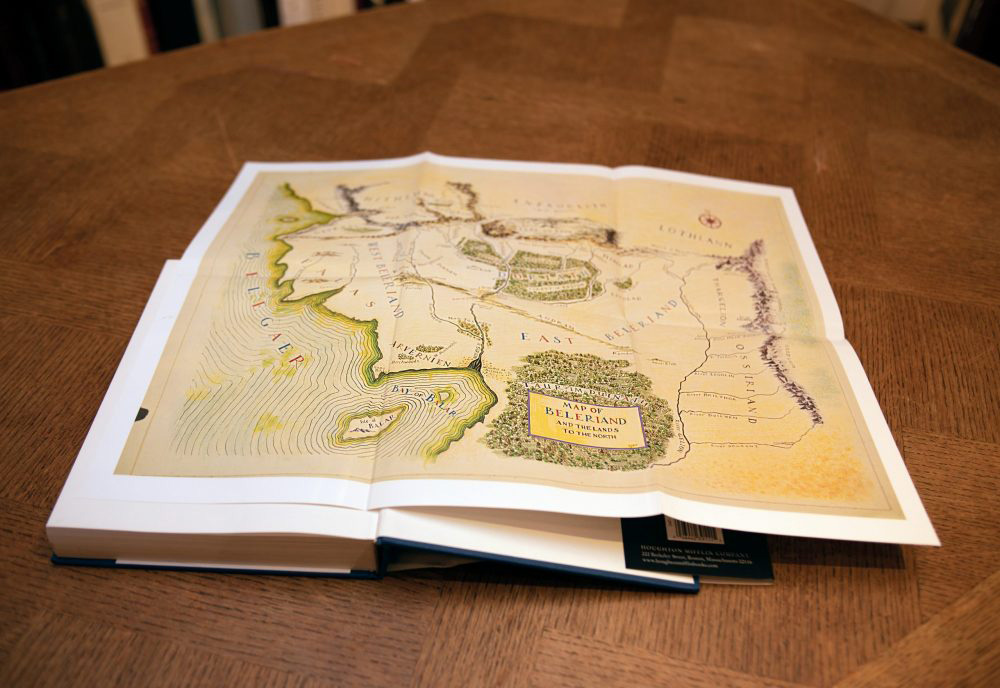
One of the themes that Ilúvatar has bidden the Ainur to sing results in the creation of the sentient races of Men and Elves, known as the Children of Ilúvatar. Some of the Ainur wish to enter Eä, becoming the Valar and the lesser Maiar, or the gods of Arda. Seeing the beauty of their creation, Melkor attempts to take it for his own but is cast out. The Valar have by this point taken physical form, and are again assailed my Melkor, who has also become corporeal. This begins the First War of Arda, in which Melkor attempts to destroy the world. The Valar, however, prevail and establish a safe habitation for the Children of Ilúvatar.
Still with us? Let’s continue.
The Epic Tale of the Silmarils and the First Age
The second book is the Valaquenta: Account of the Valar and Maiar according to the lore of the Eldar. This section goes into more detail about each of the Valar and the lesser beings, the Maiar. It also describes how Melkor seduced many of the Maiar into his service, including those who would eventually become Sauron and the Balrogs (finally some familiar faces!)
The majority of the Silmarillion is made up of the Quenta Silmarillion: The History of the Silmarils, which consists of over 20 chapters and tells the story of the First Age of Middle-earth. It picks up the history of Arda when the Ainur enter the world, fleshing out more detail about the beginning of the world from the Ainulindalë. The Valar created the land, initially a symmetrical continent lit by two lamps, one in the north and one in the south. These were destroyed by Melkor and, the symmetry of the land having been marred, the continent was split in two: Aman in the far west, where the Valar established their home, Valinor; and Middle-earth in the east. Realising, however, that elves have begun awakening the Valar return and take Melkor prisoner, sentencing him to 9,000 years incarceration to keep them safe. Before this, however, Melkor had managed to win some of the Elves to his side, and from them bred the race of Orcs. The Valor invite the Elves to live with them in Aman and, while some of them accept, others remain in Middle Earth. In Valinor, Yavnna, one of the Valar, creates the Two Trees, which illuminate Aman in place of the two Lamps.
It’s at this point we finally hear about the Silmarils, three jewels crafted by the great Elf gem-smith Fëanor, from the light of the Two Trees, which have immense power. Having been released from his captivity, feigning repentance, Melkor manages to destroy the trees with the help of Ungoliant, a giant spider, and steal the Silmarils, fleeing to Middle-earth. He is pursued by Fëanor, who has sworn to retrieve the Silmarils.
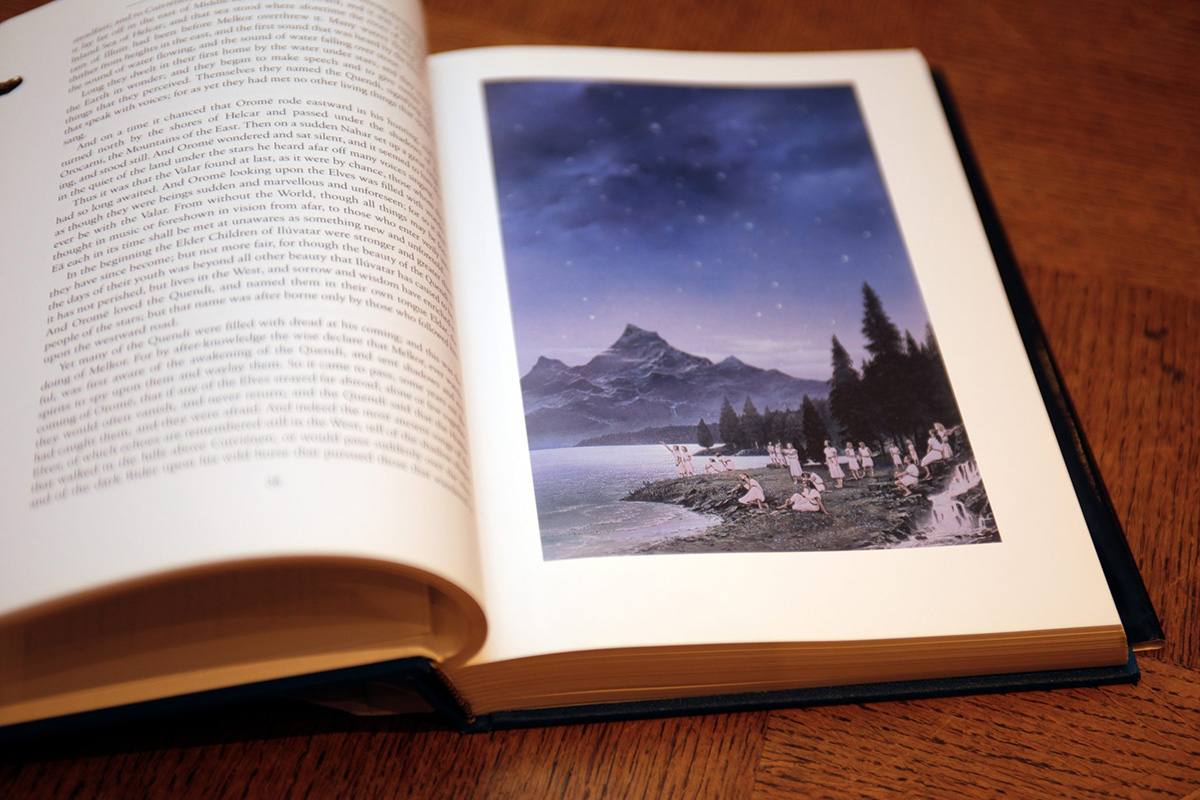
To replace the two trees, the Valar create the sun and the moon, whose light force Melkor to flee underground. At the same time, they reinforce the protections of Valinor, making it impossible to find. When the sun first rises, the race of Men begins to appear; a mortal race, in contrast to the elves who live forever unless they are killed.
In a battle to try to retrieve the Silmarils, Fëanor dies, having first made his sons swear to retrieve the stones. The Elves, previously having split into factions, unite to fight Melkor. During this time the great Elven city of Gondolin is founded, a hidden city with a secret entrance. Meanwhile, Men begin to enter Elven territories. Not all the Elves welcome them, but they form a tenuous alliance.
Hundreds of years pass and the Men and Elves continue to battle Melkor. It is here that the hero Beren (a name you might recognise from his mention in The Lord of the Rings) appears, the sole survivor from one of Melkor’s attacks. The story of Beren and Lúthien is the famous love story of Tolkien’s mythos, and is evoked in reference to the relationship of Arwen and Aragorn. In the court of Thingol, an Elf king, Beren, who is a mortal Man, falls in love with Thingol’s daughter Lúthien. Thingol is displeased and sets Beren an impossible task to win Lúthien’s hand; to find one of the Silmarils. Beren sets out with Finrod (the Elf founder of the city of Gondolin) to steal one of the stones from Melkor’s stronghold of Angband. Beren and Finrod are captured by Sauron (yes, that one!) who was one of the Maia corrupted by Melkor and has become his most trusted lieutenant. Meanwhile, Lúthien has run away from her father’s court to aid Beren. Finrod wrestles with werewolves commanded by Sauron and is killed but Beren is rescued by Lúthien who sings a song to put Melkor to sleep, enabling Beren to get hold of a Silmaril.
While trying to escape, his hand is bitten off by a wolf, Silmaril and all. They return to Lúthien’s father, who is sufficiently impressed, even without the Silmaril, to allow them to marry, the first union between a Man and an Elf. Later, Beren finds the werewolf who ate his hand, kills it, and cuts out the Silmaril, but is mortally wounded in the process. He dies in Lúthien’s arms and Lúthien dies of grief. However, Lúthien, in the afterlife, petitions the Lord of the Dead for their cause and is offered the choice for both to be resurrected if she embraces mortality. Lúthien chooses a mortal life with Beren.
Emboldened by Beren and Lúthien’s success, a great force of Elves, Men, and Dwarves attack Melkor, but some of the men have secretly turned against the alliance and fight for Melkor. Many of the great Elven cities fall. The Dwarves, Men, and Elves begin warring amongst themselves over the Silmaril. Beren and Lúthien’s son is killed and the Silmaril is saved by their granddaughter Elwing who flees, later marrying Eärendil, a half-Elf. With the power of the Silmaril, Elwing and Eärendil are able to cross the sea to Valinor, which has been otherwise shielded against ships landing from Middle-earth. They seek help from the Valar to finally defeat Melkor, and he is expelled and cast into the Void, an event which signals the end of the First Age of Middle-earth. Eärendil and Elwing are granted immortality and Eärendil sails into the sky wearing the Silmaril and becomes a star.
The last two Silmarils have been seized by the sons of Fëanor (the original maker, who made his sons swear to get the stones back). However, as they took them by force, the Silmarils burned their hands signalling that they were no longer worthy to receive them. One of the brothers kills himself by leaping into a fiery chasm with the stone, thus destroying it, while the other casts his into the sea and spends the rest of his life wandering the shore.
The children of Eärendil and Elwing are Elrond and Elros. As they have mixed heritage, they are allowed to choose their race; Elrond chooses to become an Elf and Elros a Man. Elros becomes the first king of Númenor, the great island civilisation of men that has been likened to Atlantis. Númenor was raised from the sea by the Valar as a gift to the Men who stood with the Elves against Melkor.
If you’ve made it this far, congratulations, you’re nearly there! The fourth book of the Silmarillion is Akallabêth, or ‘The Downfallen’. It recounts the rise and fall of Númenor and the Númenorean descendants, the Dúnedain (you may remember Aragorn is referred to as the ‘last of the Dúnedain in The Lord of the Rings – this is why he lives longer than most mortal Men).
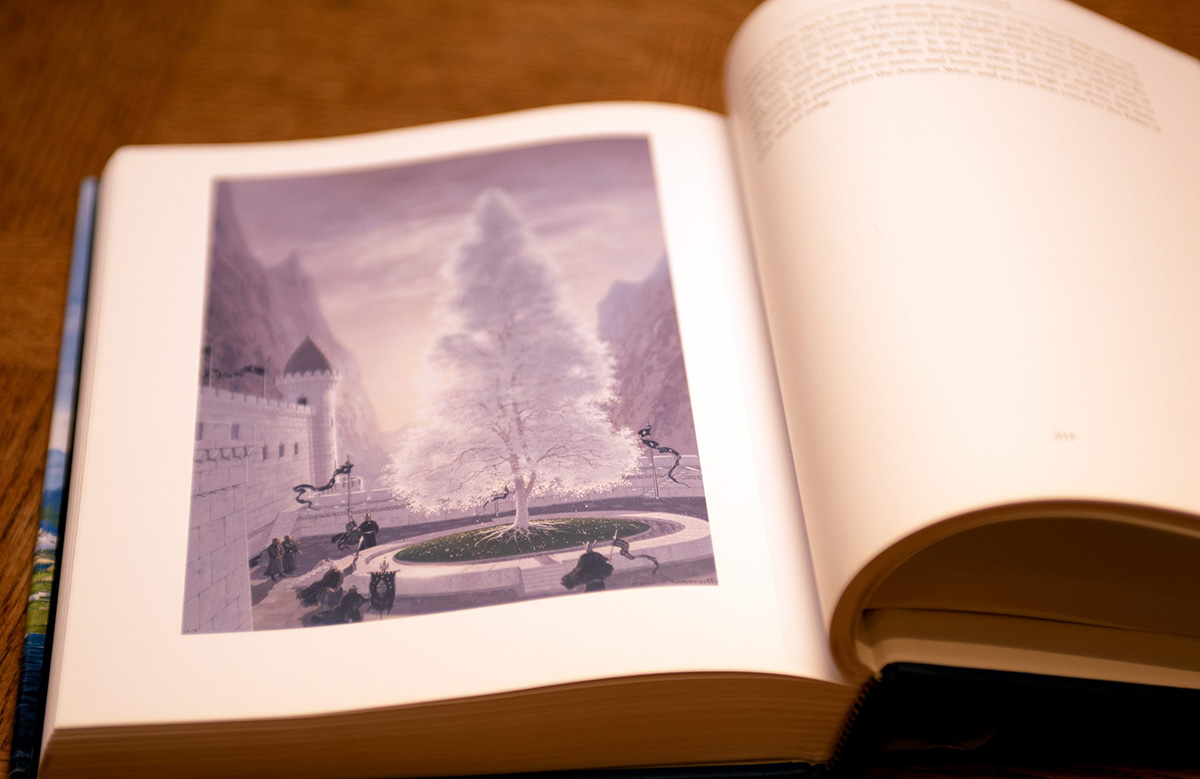
The Downfall of Númenor and the Founding of Arnor and Gondor
After the defeat of Melkor, three loyal houses of men who had aided the elves are granted their own land, as well as wisdom, power, and increased lifespans. Unfortunately, the Second Age sees the rise of Sauron, Melkor’s most loyal servant, who begins his conquest of Middle-earth. Seeing he would not be able to defeat the Númenoreans, Sauron allows himself to be captured, and thus manages to enthrall the king Ar-Pharazôn, turning him and his people against the Elves of Aman in the West, and the Valar. Ar-Pharazôn raises a great force and sails against Aman. Stricken at this betrayal, the Valar and the Elves call on Ilúvatar, the creator, who destroys the Númenorean fleet and submerges Númenor. Only those who remained true to the Valar are allowed to live.
Sauron’s physical form is destroyed but his spirit (as a Maia) returns to Middle-earth. The faithful Númenoreans also sail to Middle-earth, including Elendil, a descendent of Elros, and his sons Isildur and Anárion. They found two great kingdoms of Men, Arnor and Gondor. From Númenor, they brought seeds from a white tree, the descendent of which is the White Tree of Gondor we see in The Lord of the Rings.
Congratulations traveller, you’ve made it to familiar territory with the final book of the Silmarillion: Of the Rings of Power and the Third Age. This section also covers the Second Age which, we understand, will form the setting for the events of The Rings of Power. In this period, Sauron reappears, building up his power in Mordor, gathering armies of Orcs, Trolls, and other creatures who had served Melkor, and erecting the fortress of Barad-dûr. He wins the allegiance of some of the nations of Men, such as the Easterlings and Haradrim, but wishes to win the Elves to his side for their power. To do this, he disguises himself, calling himself Annatar, the “Lord of Gifts”.
Befriending the great Elf smiths, including Celebrimbor (greatest of craftsmen, descended from Fëanor), he teaches them how to make the rings of power. Some amongst them, such as Galadriel, Elrond, and Gil-galad, do not trust him. However, he deceives them all, secretly forging the One Ring, which has the power to control all the others.
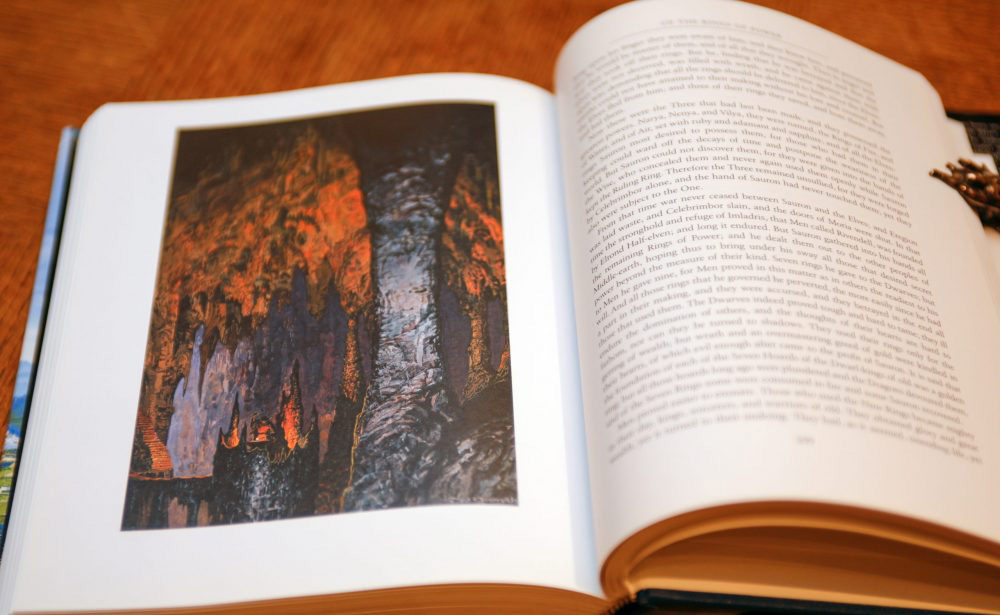
The Last Alliance and the Fall of Sauron
Eventually, Sauron’s treachery is revealed, and there is open warfare in Middle-earth. Sauron demands all the rings of power that have been made but the Elves manage to hide the three greatest. The rest, however, are seized and Sauron gives seven to the Dwarves (who, while resistant to Sauron’s control, develop, through their corrupting power, an insatiable lust for gold) and nine to Men, knowing they will be the easiest to corrupt. As we know, these men become the Nazgûl, Sauron’s most deadly and powerful servants. This period culminates in the Last Alliance of Men and Elves led by Gil-galad and Elendil against Sauron’s forces. Isildur cuts the Ring from Sauron’s hand, thus ending the war. The defeat of Sauron brings the Second Age to a close.
The rest, you know. Isildur claims the One Ring but is killed, and the Ring lost for generations. The remainder of the book gives a brief overview of the events leading up to and including The Lord of the Rings, but that, as they say, is another story.
To discover first editions of “The Silmarillion” please visit our website’s dedicated page for this timeless Tolkien masterpiece.

